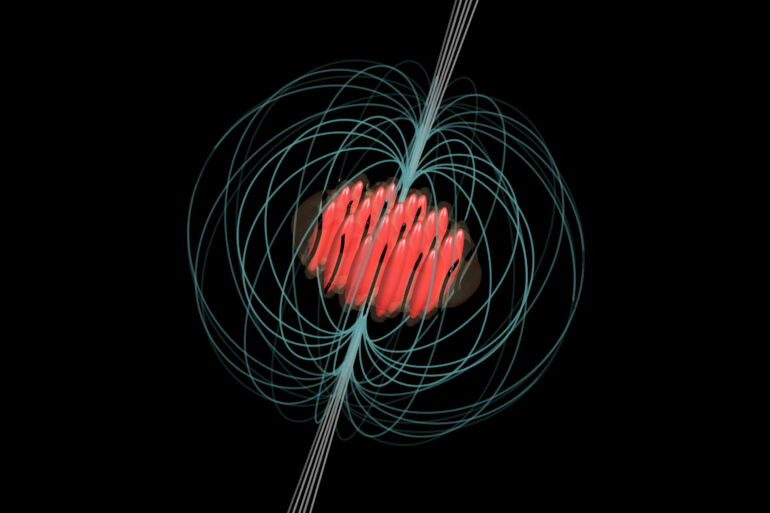A collaboration between quantum physicists and astrophysicists, led by Francesca Ferlaino and Massimo Mannarelli, has achieved a significant breakthrough in understanding neutron star glitches. They were able to numerically simulate this enigmatic cosmic phenomenon with ultracold dipolar atoms. This research, now published in Physical Review Letters, establishes a strong link between quantum mechanics and astrophysics and paves the way for quantum simulation of stellar objects from Earth.
Neutron stars have fascinated and puzzled scientists since the first detected signature in 1967. Known for their periodic flashes of light and rapid rotation, neutron stars are among the densest objects in the universe, with a mass comparable to that of the sun but compressed into a sphere only about 20 kilometers in diameter.
These stellar objects exhibit a peculiar behavior known as a “glitch,” where the star suddenly speeds up its spin. This phenomenon suggests that neutron stars might be partly superfluid. In a superfluid, rotation is characterized by numerous tiny vortices, each carrying a fraction of angular momentum. A glitch occurs when these vortices escape from the star’s inner crust to its solid outer crust, thereby increasing the star’s rotational speed.
The key ingredient for this study lies in the concept of a “supersolid”—a state that exhibits both crystalline and superfluid properties—which is predicted to be a necessary ingredient of neutron star glitches. Quantized vortices nest within the supersolid until they collectively escape and are consequently absorbed by the outer crust of the star, accelerating its rotation. Recently, the supersolid phase has been realized in experiments with ultracold dipolar atoms, providing a unique opportunity to simulate the conditions within a neutron star.
The study by researchers at the University of Innsbruck and the Austrian Academy of Sciences as well as the Laboratori Nazionali del Gran Sasso and the Gran Sasso Science Institute in Italy demonstrates that glitches can occur in ultracold supersolids, serving as versatile analogs for the inside of neutron stars. This groundbreaking approach allows for a detailed exploration of the glitch mechanism, including its dependence on the quality of the supersolid.
“Our research establishes a strong link between quantum mechanics and astrophysics and provides a new perspective on the inner nature of neutron stars,” says first author Elena Poli. Glitches provide valuable insights into the internal structure and dynamics of neutron stars. By studying these events, scientists can learn more about the properties of matter under extreme conditions.
“This research shows a new approach to gain insights into the behavior of neutron stars and opens new avenues for the quantum simulation of stellar objects from low-energy Earth laboratories,” says Francesca Ferlaino.
More information:
Elena Poli et al, Glitches in Rotating Supersolids, Physical Review Letters (2023). DOI: 10.1103/PhysRevLett.131.223401
Provided by
University of Innsbruck
Citation:
Unlocking neutron star rotation anomalies: Insights from quantum simulation (2023, December 5)



